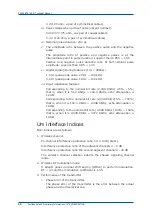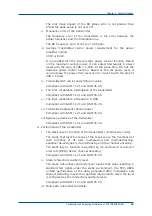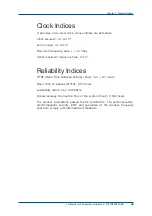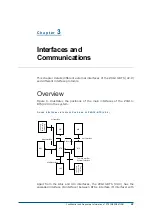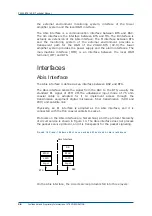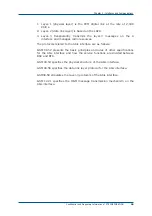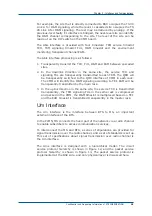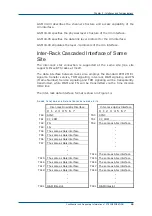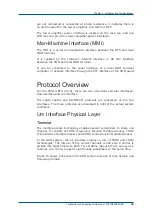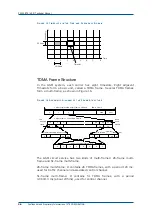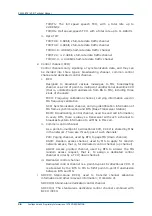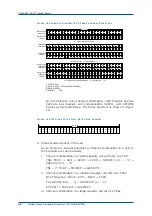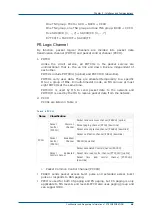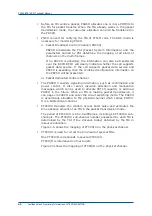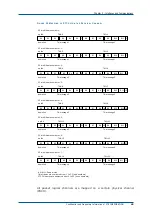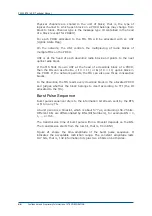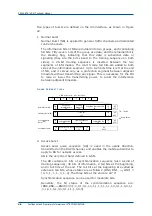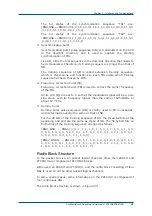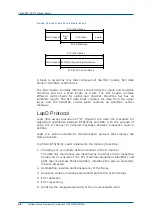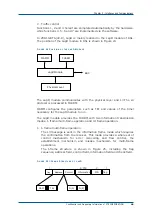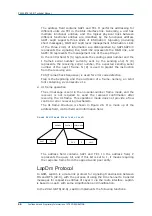
Chapter 3 - Interfaces and Communications
Confidential and Proprietary Information of ZTE CORPORATION 35
are not connected or connected at a high resistance, it indicates there is
no alarm output for the tower amplifier, and Alarm is OFF.
The tower amplifier power interface is located on the rack top, and one
BTS rack can provide 3 tower amplifier power interfaces.
Man-Machine Interface (MMI)
The MMI is a serial communication interface between the BTS and local
O&M terminal.
It is realized by the 10-BaseT network interface or RS 232 interface
between the CMM and local O&M terminal.
It can be connected to the serial interface of a local O&M terminal
computer or network interface through the ETP interface of the CMM panel.
Protocol Overview
For the ZXG10-BTS (V2.9), there are two important external interfaces:
Abis interface and Um interface.
The LapD, LapDm and RR/MM/CM protocols are processed on the two
interfaces. The three protocols are discussed in light of the actual system
conditions.
Um Interface Physical Layer
Timeslot
The multiple access technology enables several subscribers to share one
channel. It consists of FDMA (Frequency Division Multiple Access), TDMA
(Time Division Multiple Access) and CDMA (Code Division Multiple Access).
In the GSM system, the air interface employs a mix of FDMA and TDMA
technologies. The interval of the carrier channels is 200 kHz. A carrier is
divided into eight timeslots. Each TS, 15/26ms (about 577µs), serves as a
channel, so a carrier supports eight mobile subscribers at the same time.
Figure 15 shows a channel in the GSM system in terms of time domain and
frequency domain.
Summary of Contents for ZXG10-BTS
Page 4: ...This page is intentionally blank ...
Page 8: ...Figures 121 Tables 123 ...
Page 9: ...This page is intentionally blank ...
Page 10: ......


